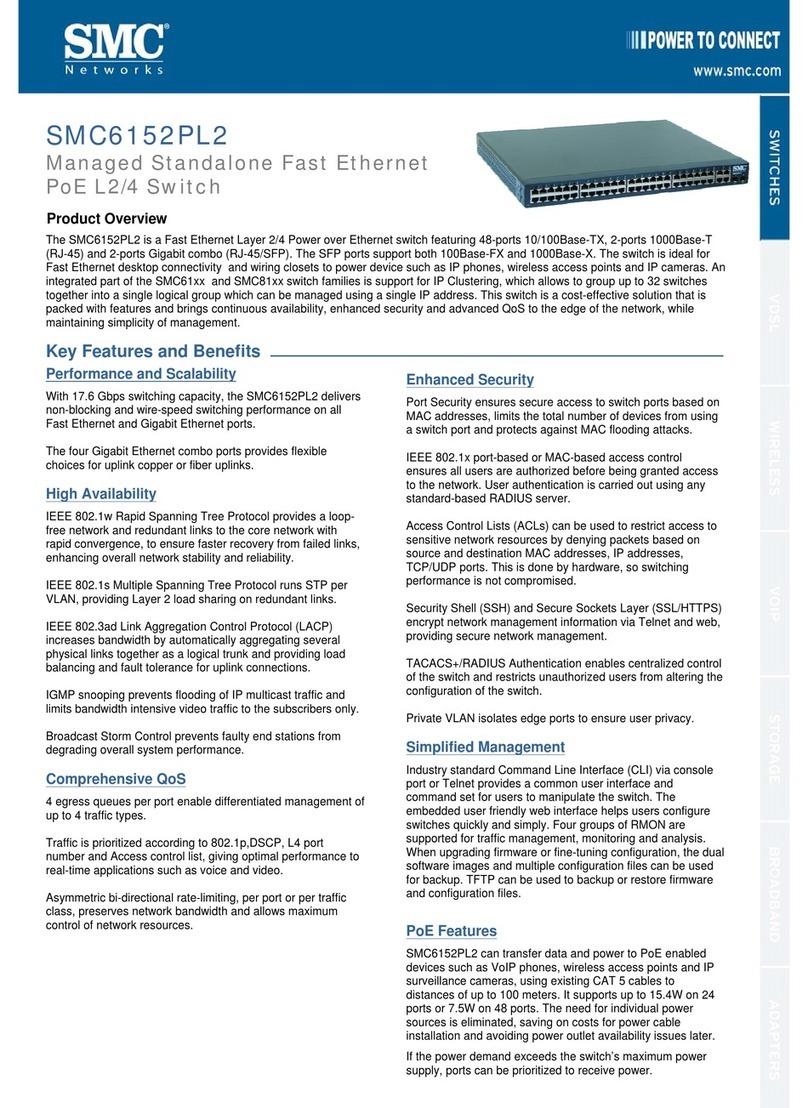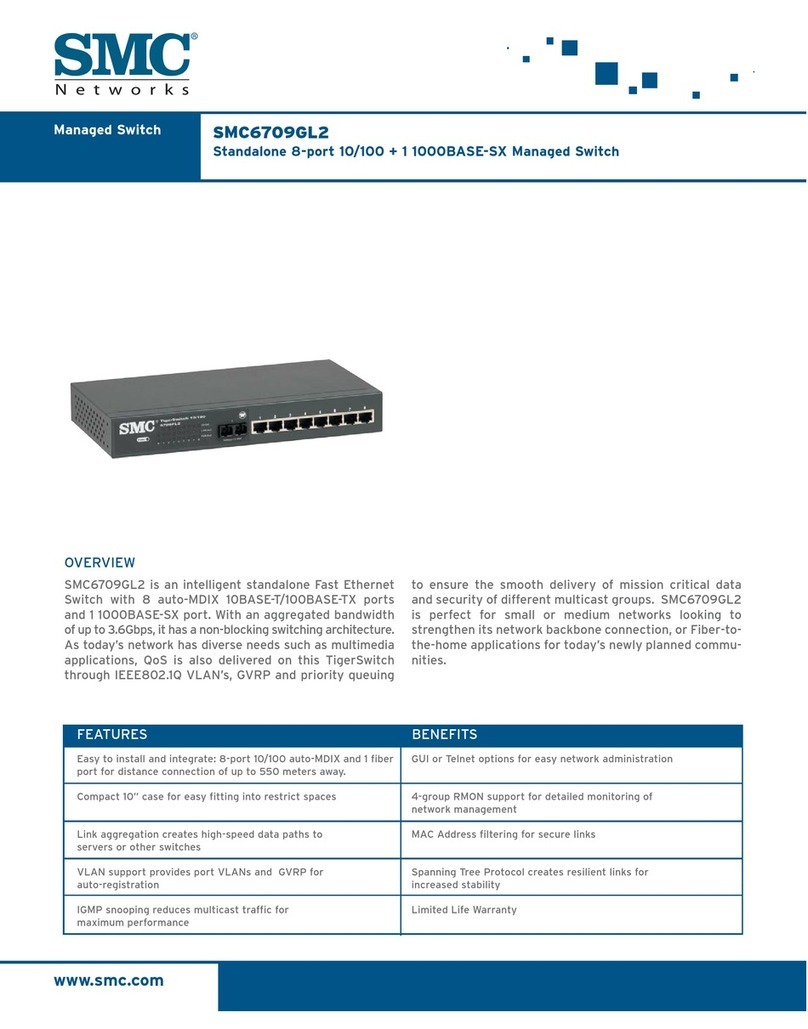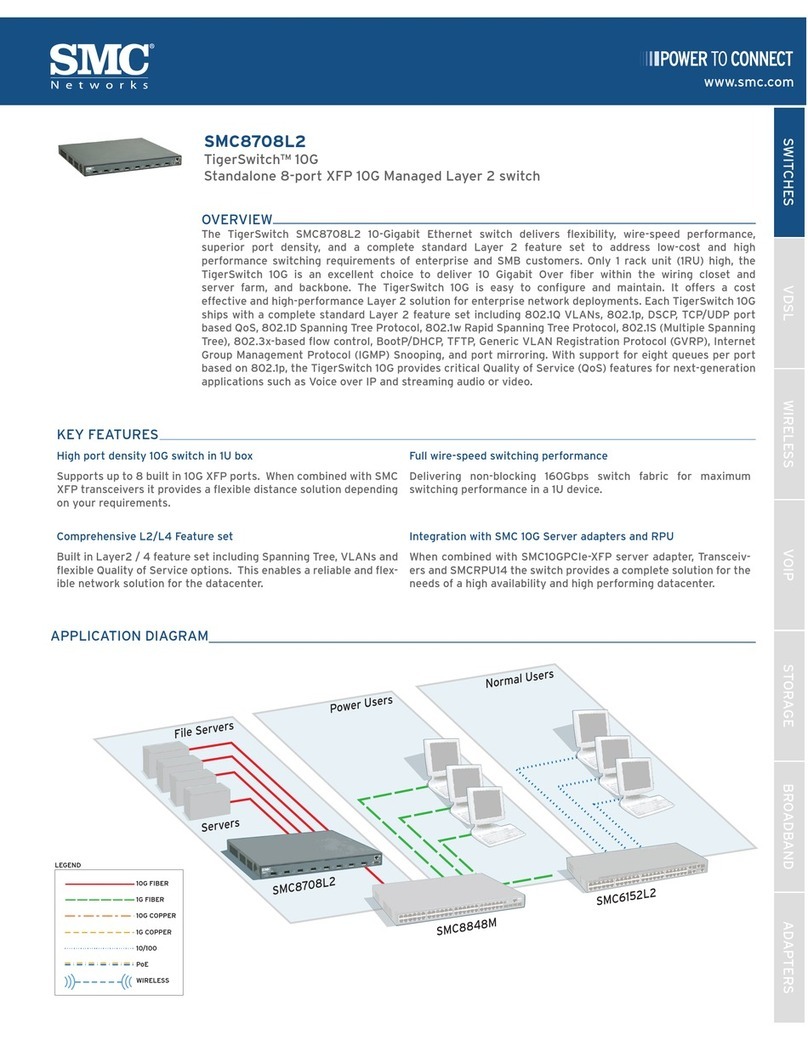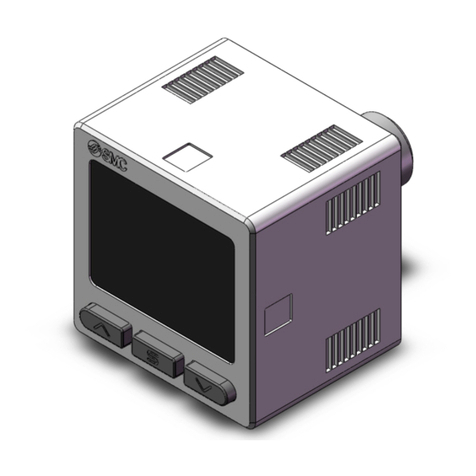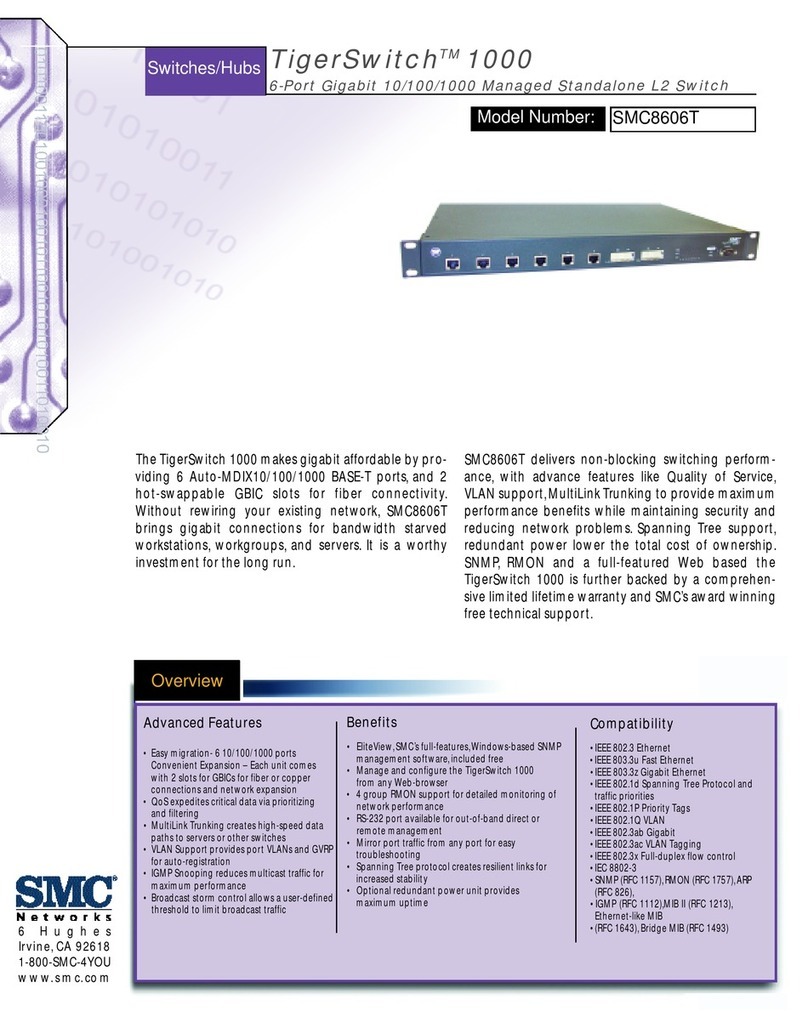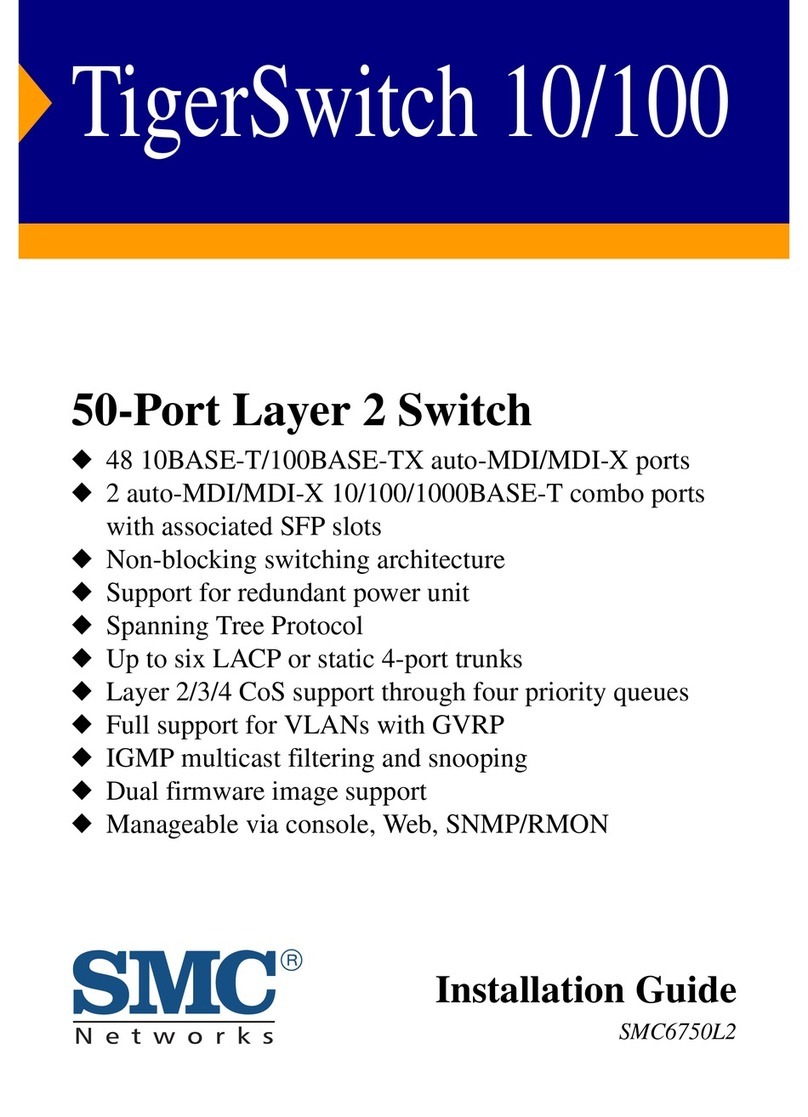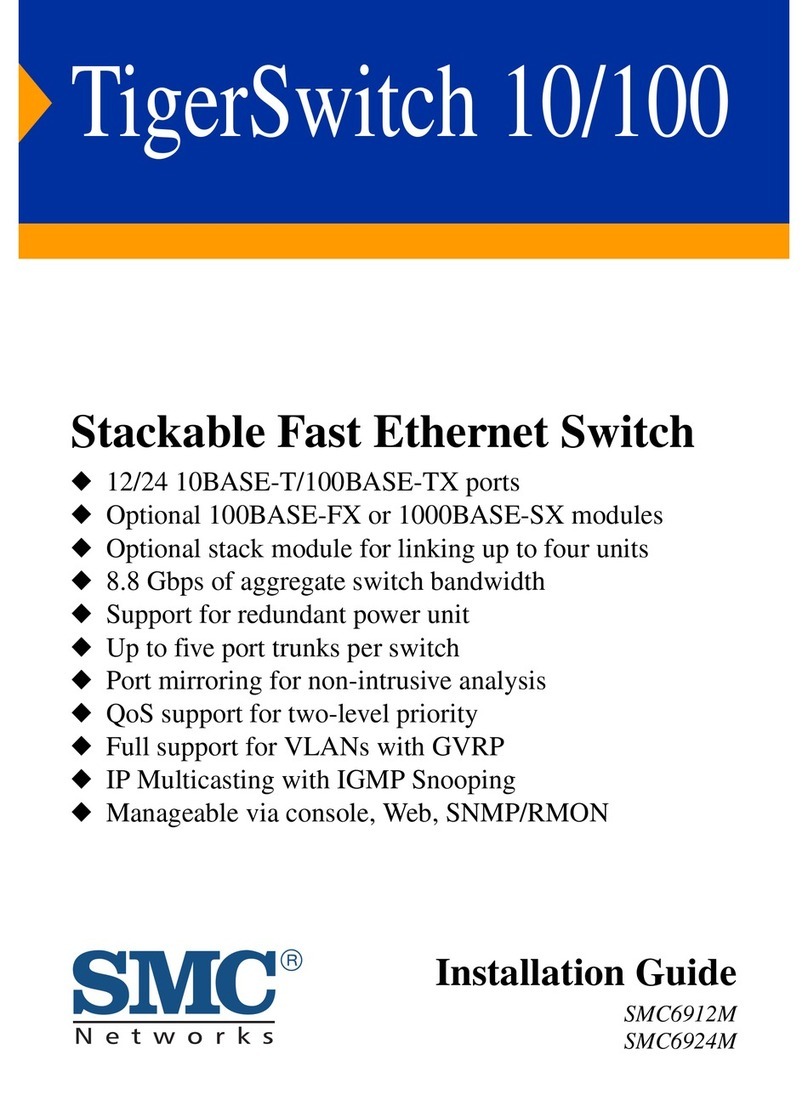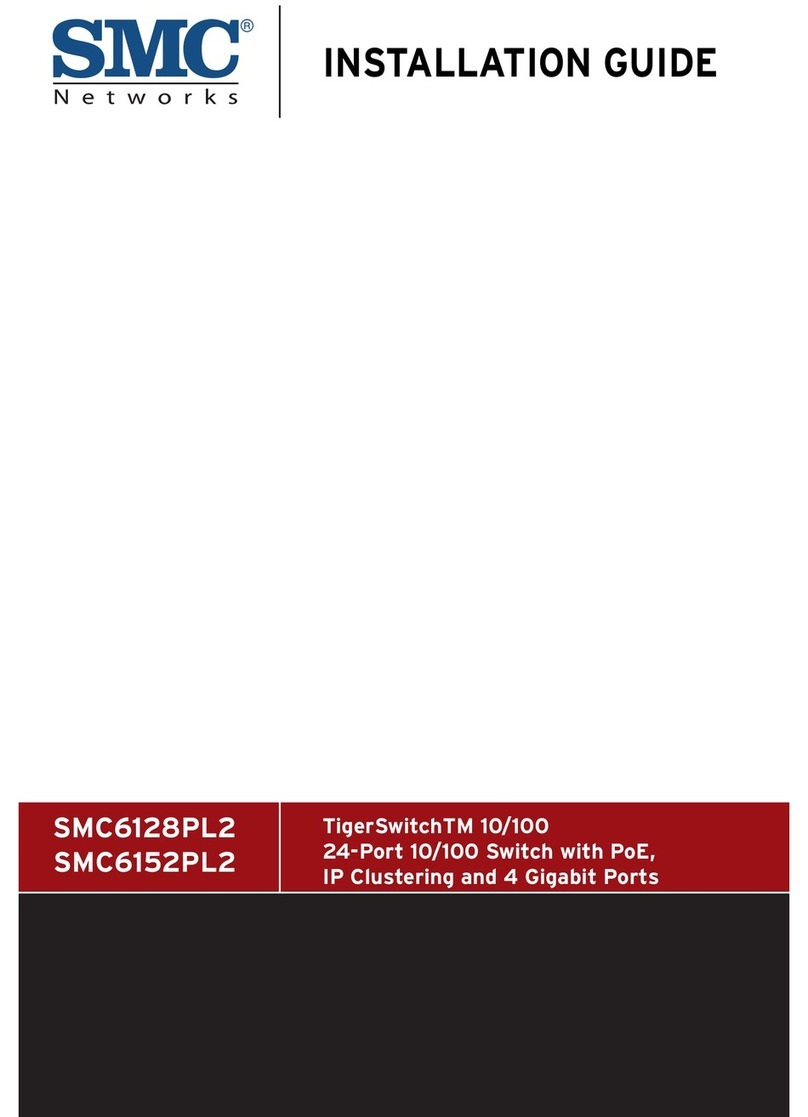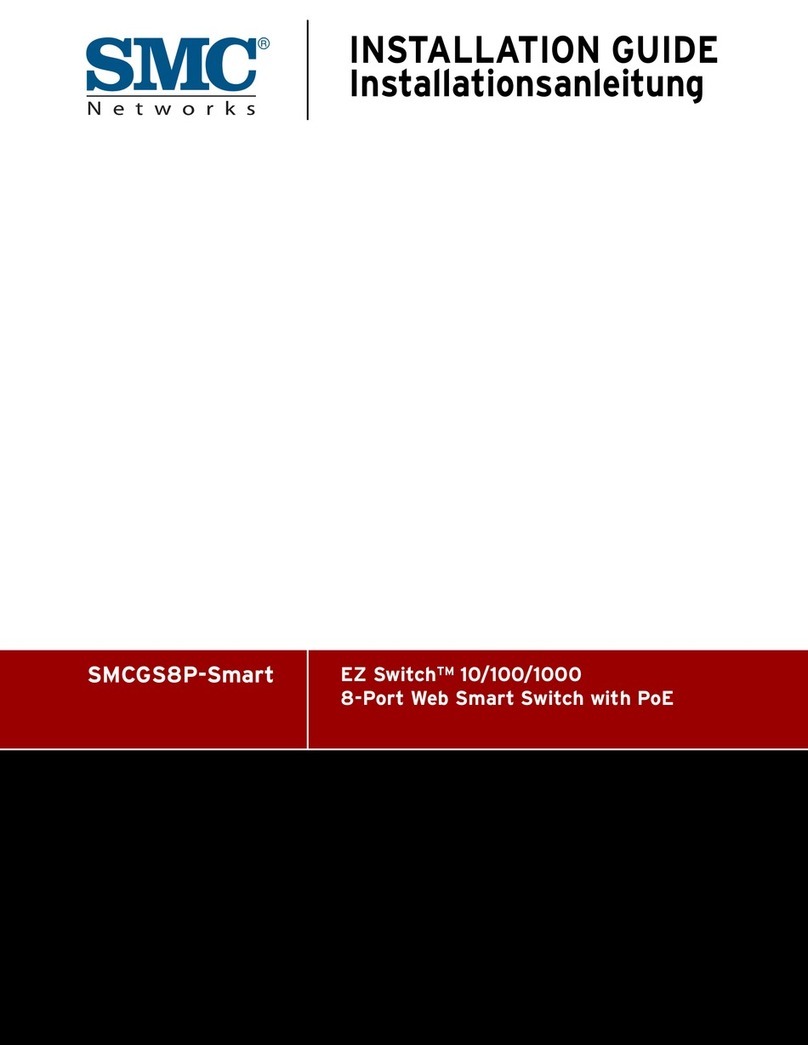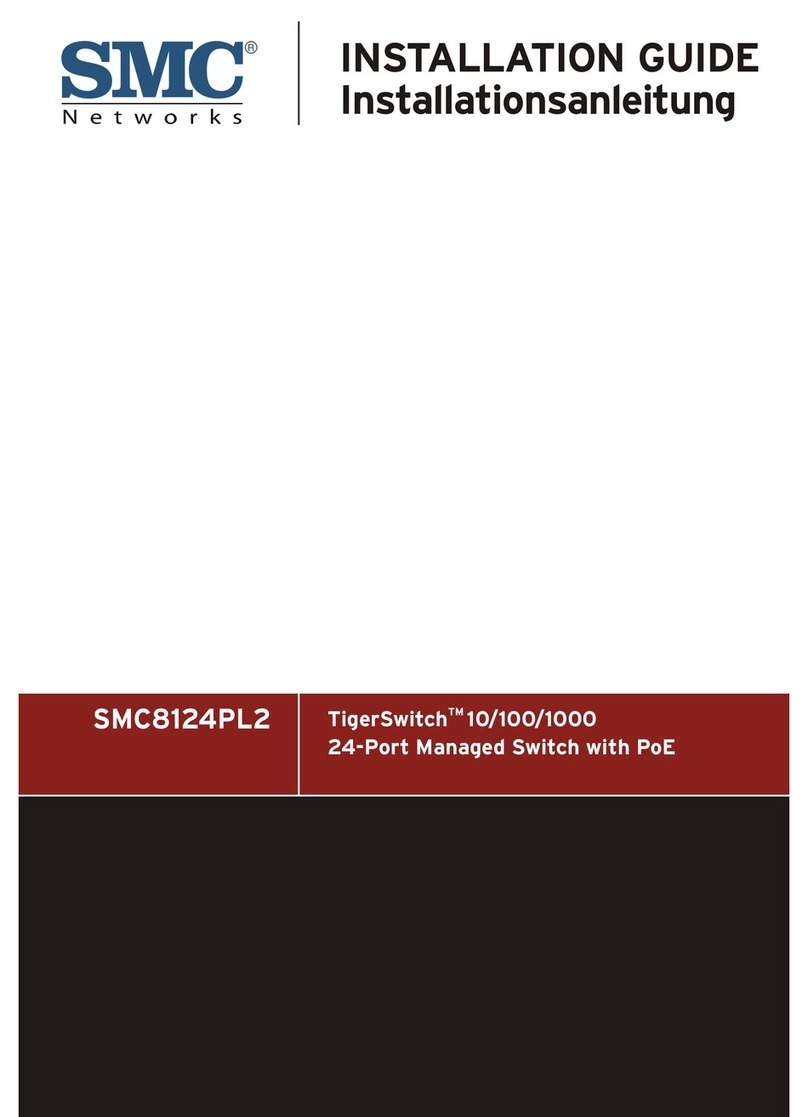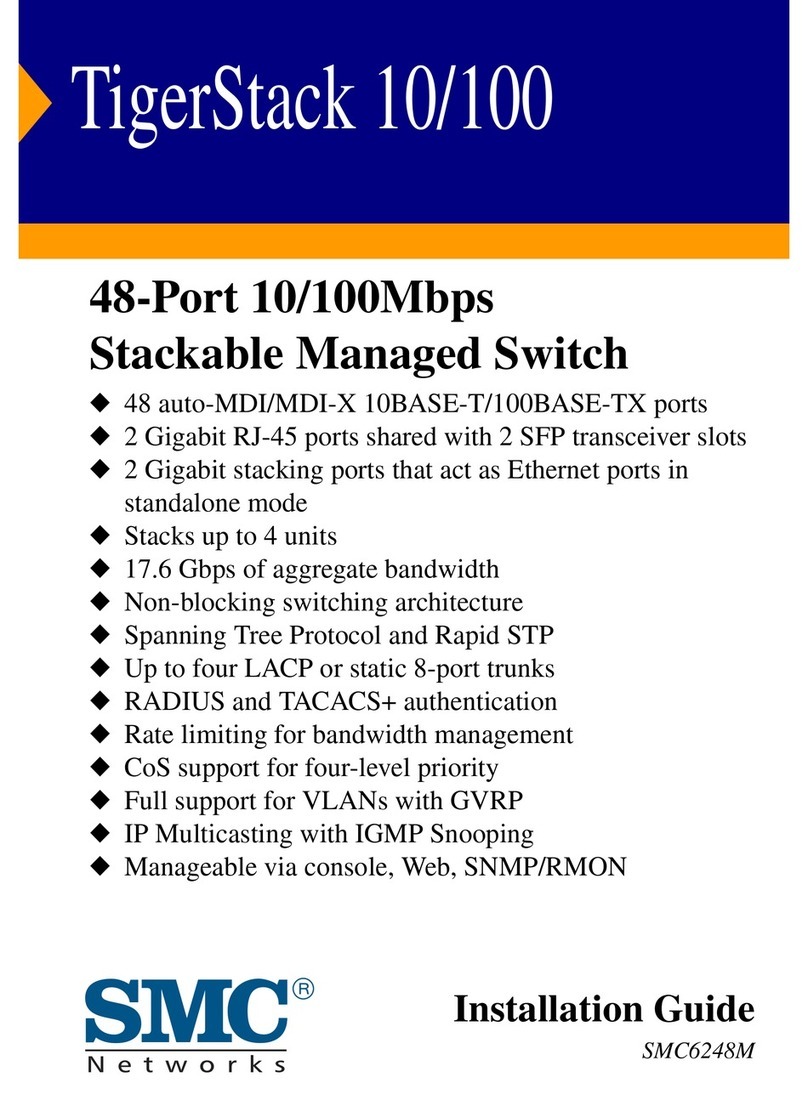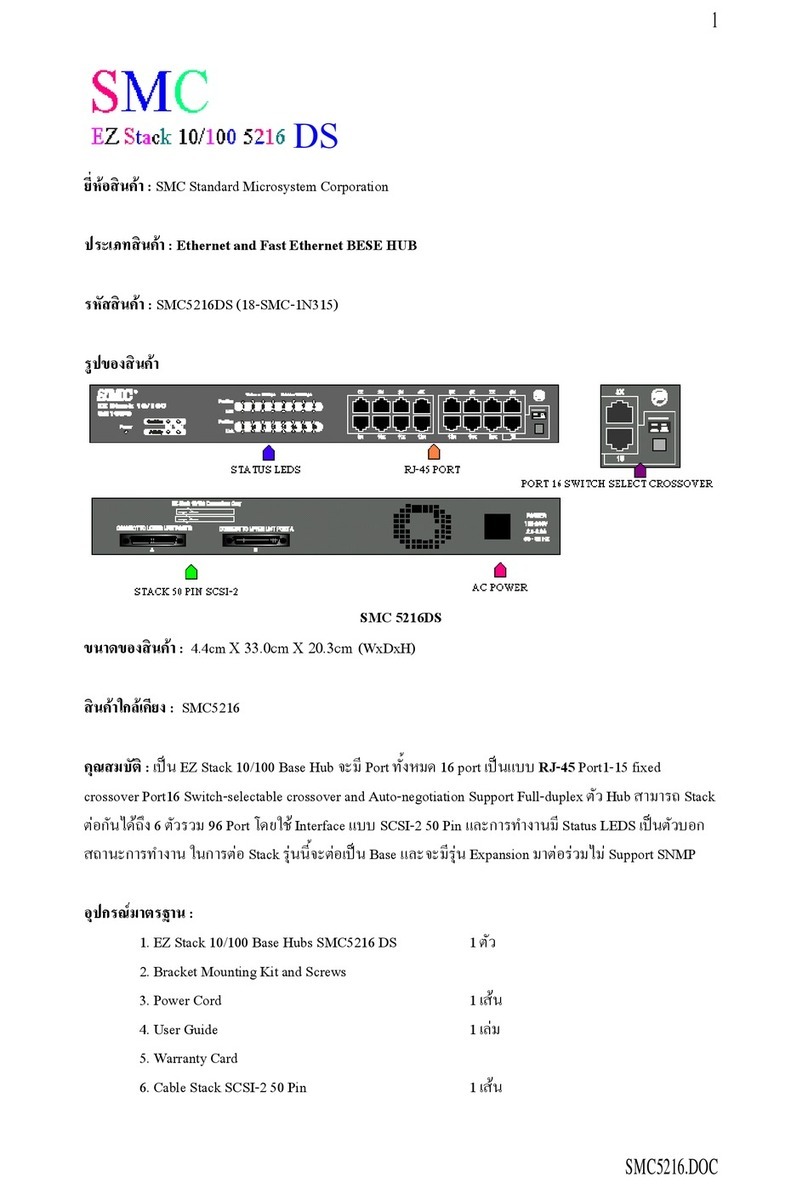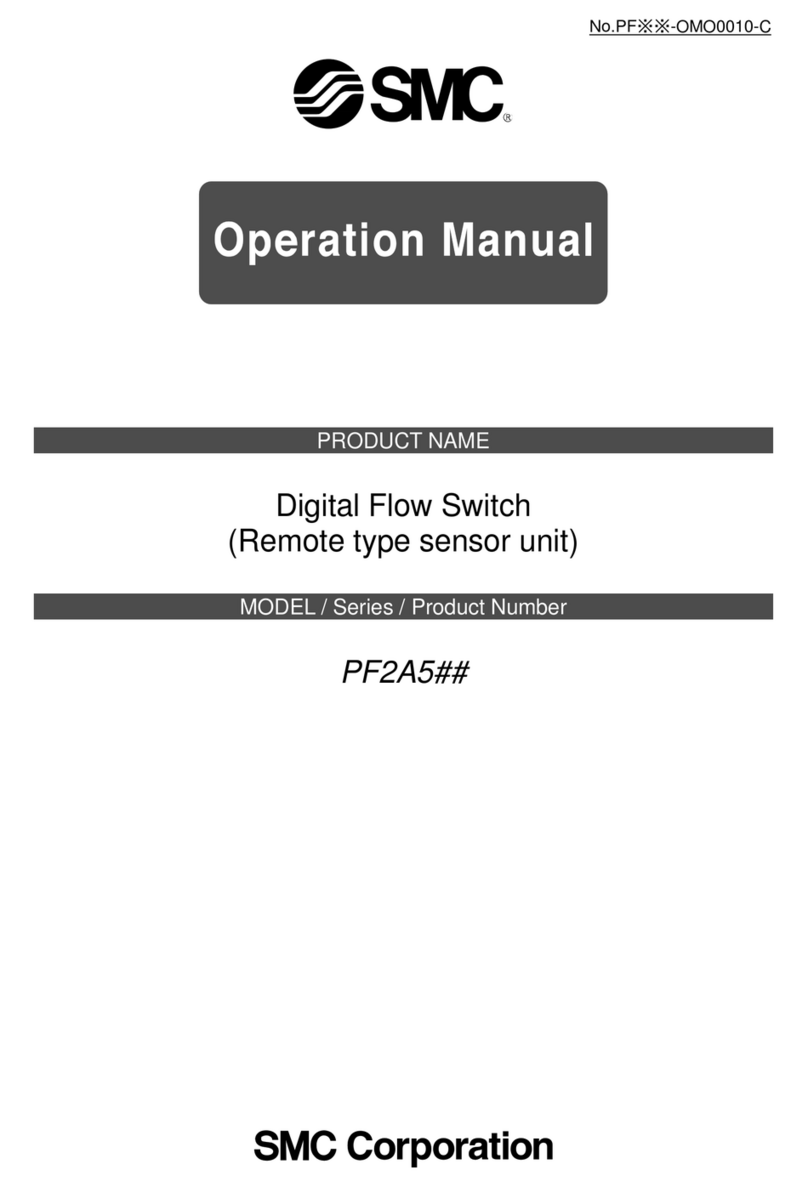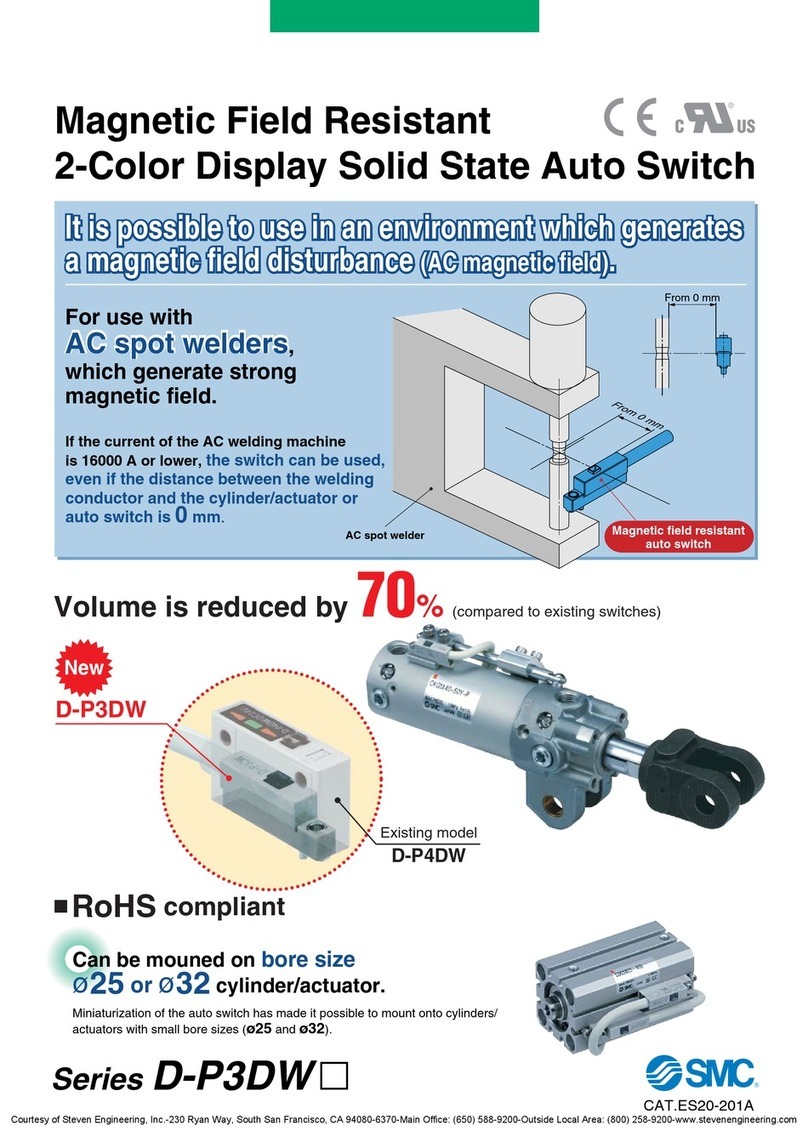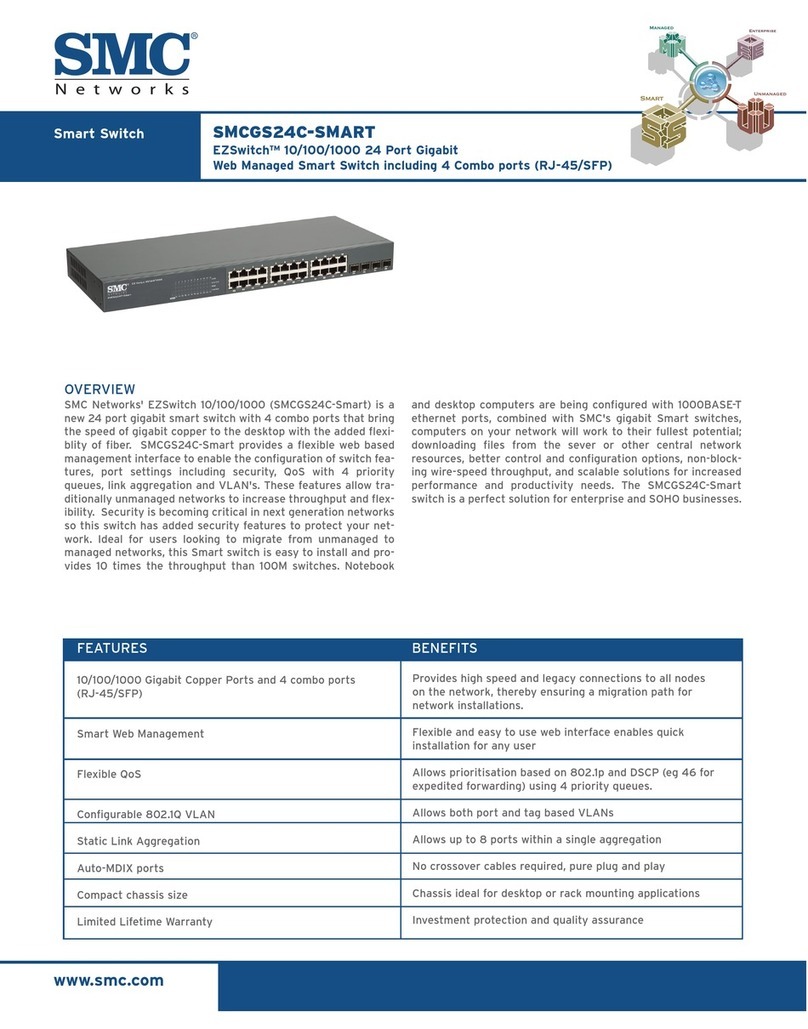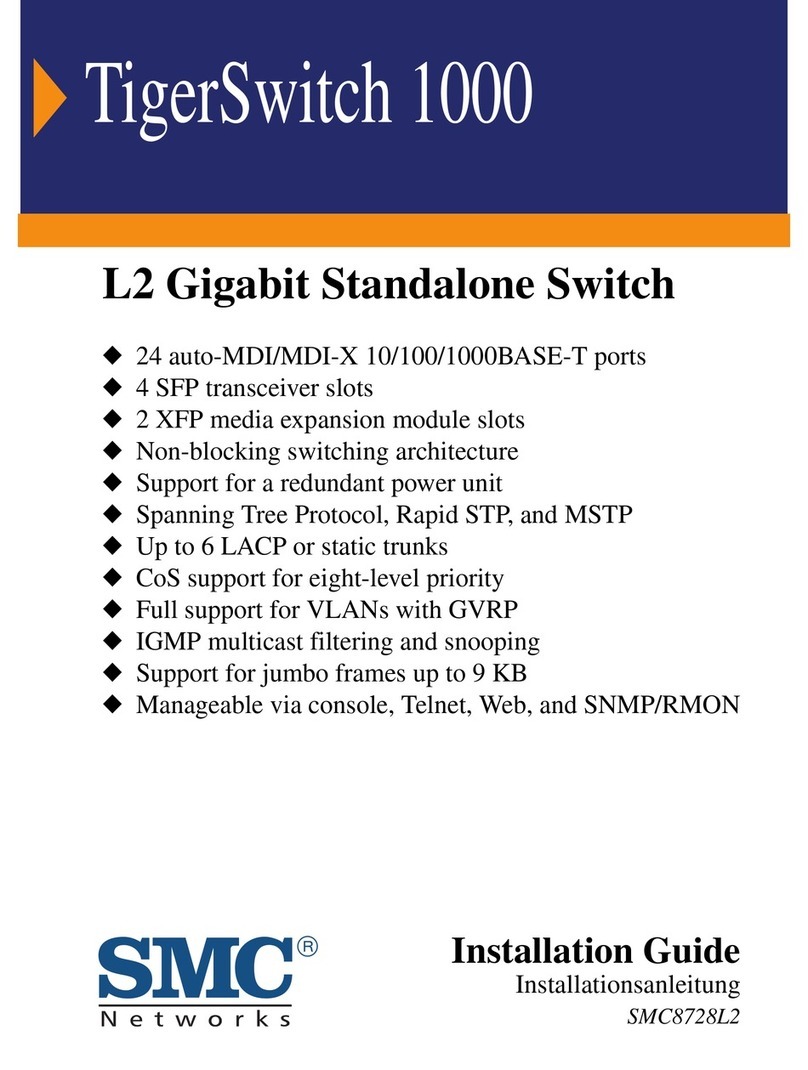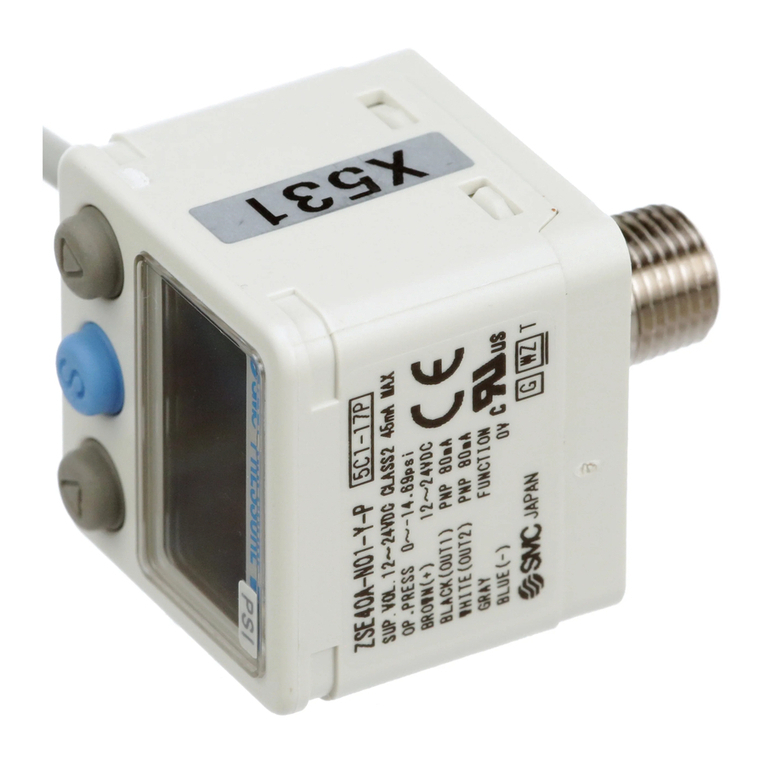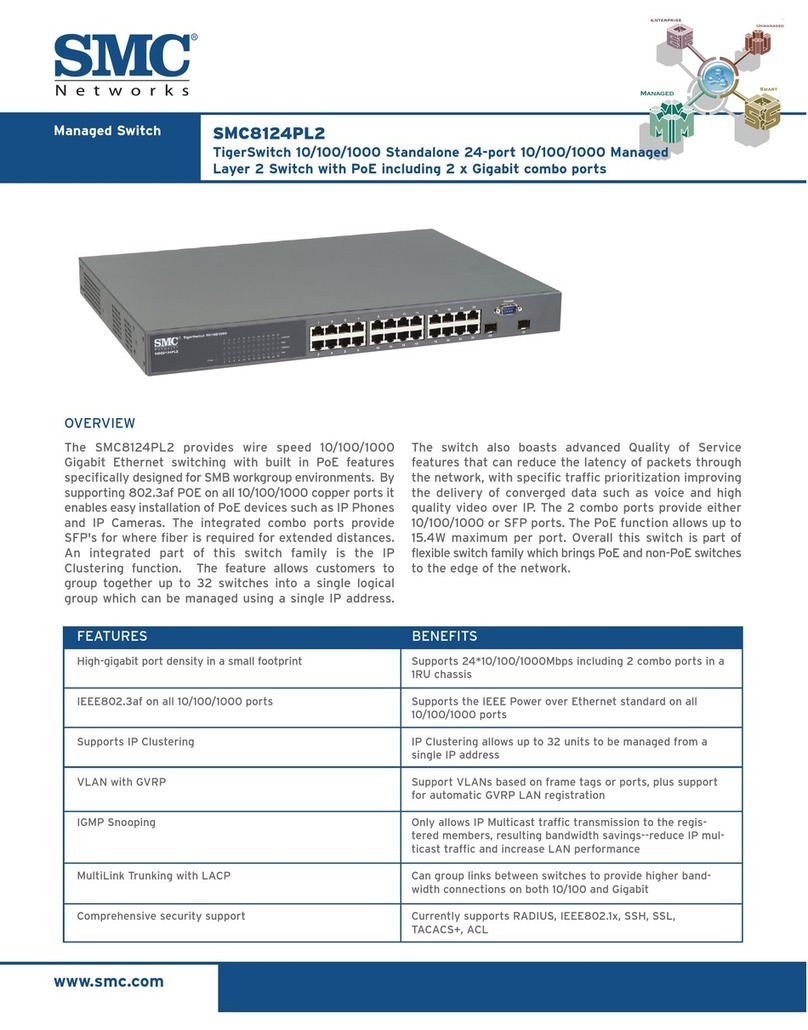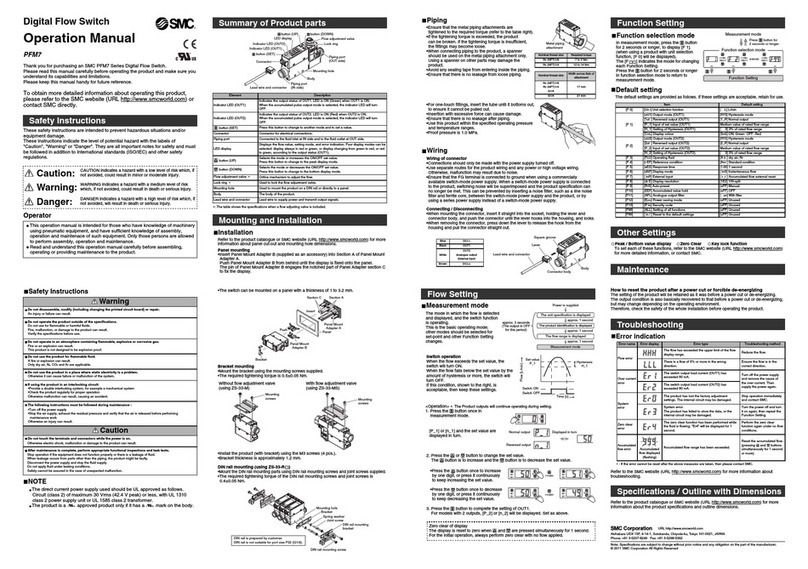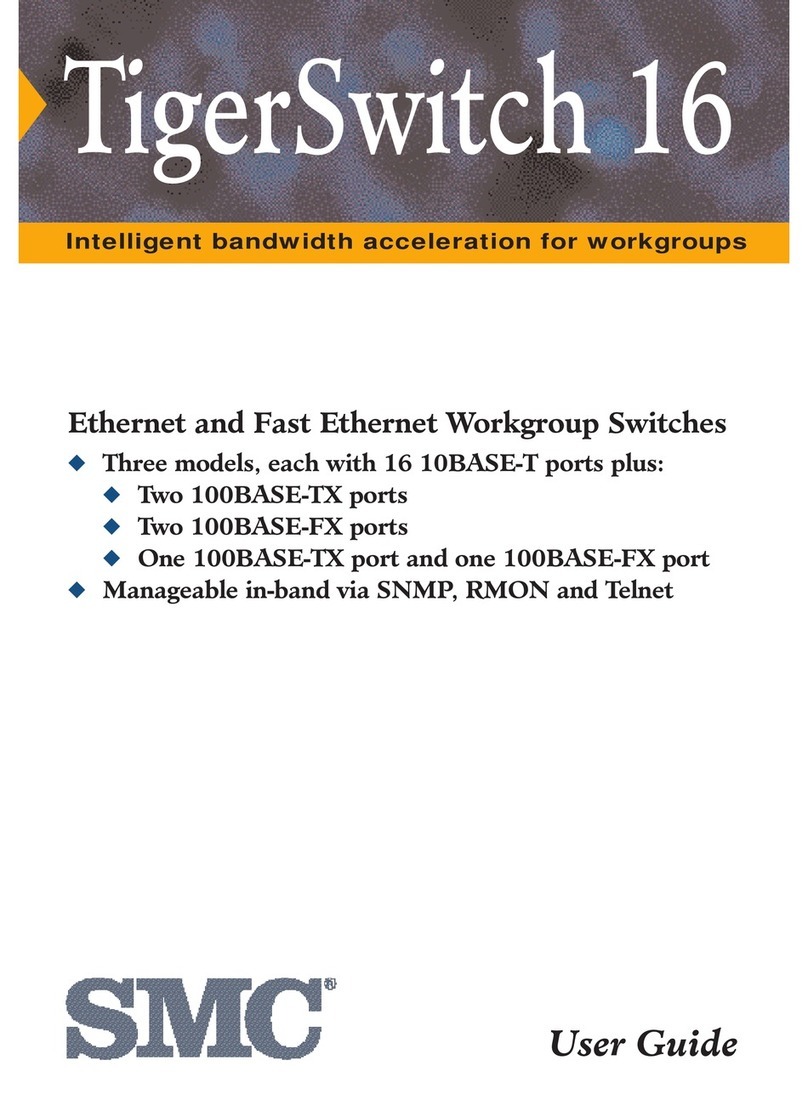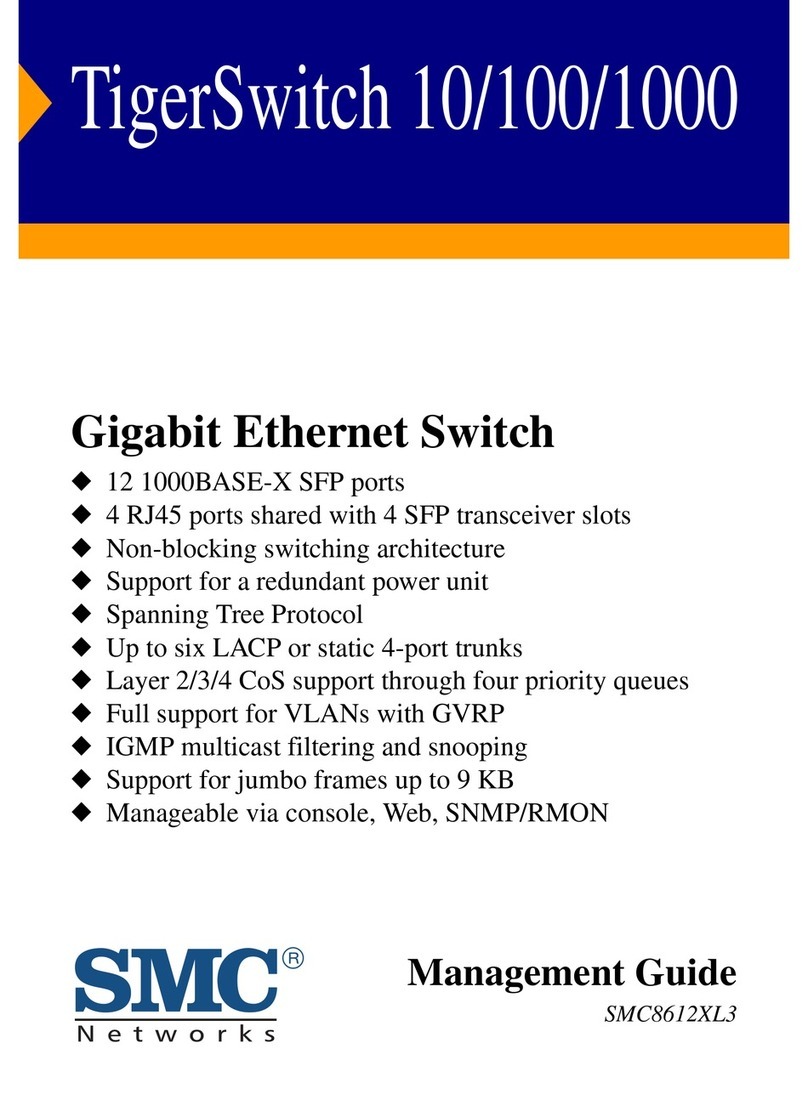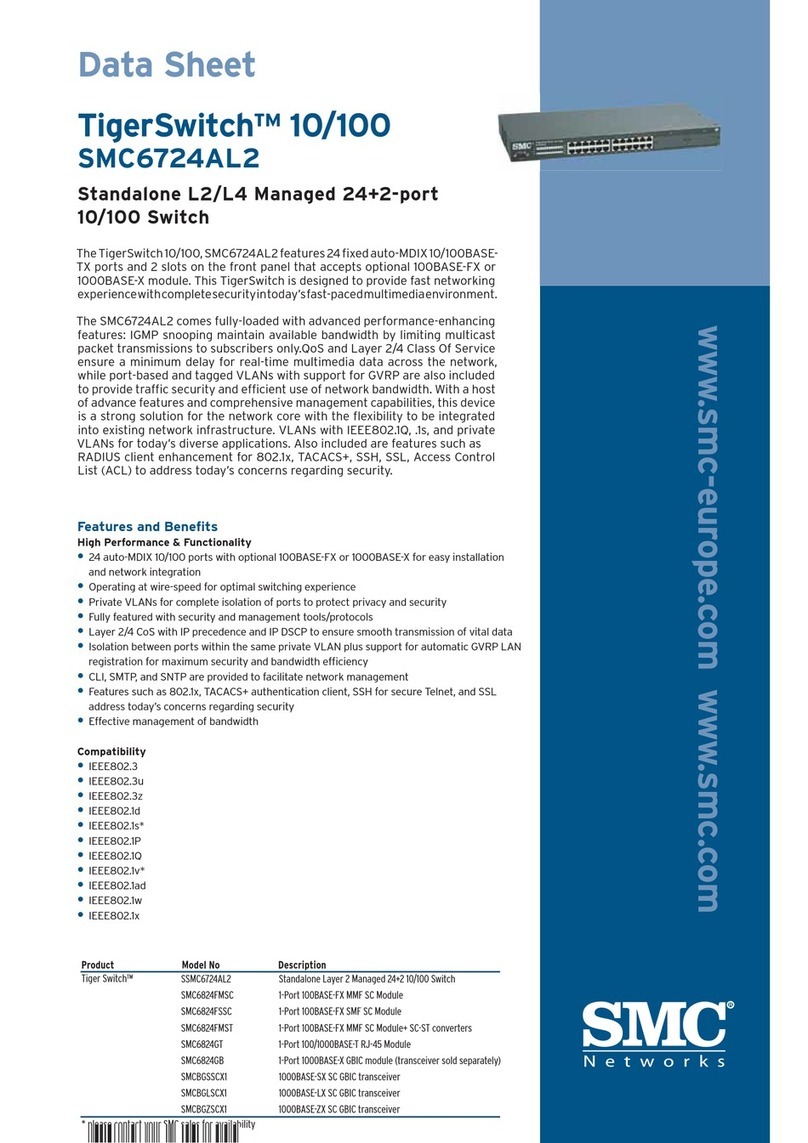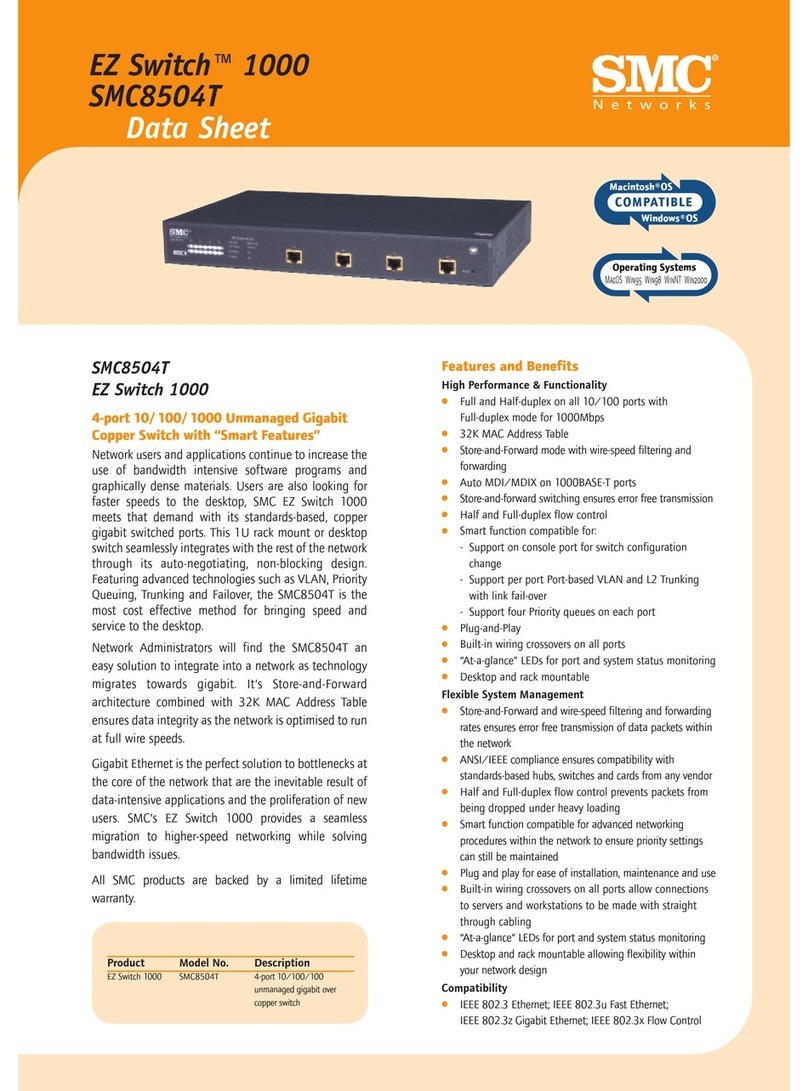LFE**-TFP41
Installation and Maintenance Manual
Electromagnetic Digital Flow Switch
LFE
*
Series
Thank you for purchasing the LFE*Series Electromagnetic type Digital
Flow Switch.
Please read this manual carefully before operating the product and make
sure you understand its capabilities and limitations.
Please keep this manual in a safe place for future reference.
To obtain more detailed information about operating this product, please
refer to the SMC website ( URL http://www.smcworld.com) or contact SMC
directly.
1 Safety Instructions
These safety instruction are intended to prevent a hazardous situation
and/or equipment damage.
These instructions indicate the level of potential hazard with the labels of
“Caution”,”Warning” or ”Danger”. They are all important notes for safety
and must be followed in addition to International standards(ISO/IEC),Japan
Industrial Standards(JIS) and other safety regulations.
Caution Indicates a hazard with a low level of risk, which if not
avoided, could result in minor or moderate injury.
Warning Indicates a hazard with a medium level of risk, which if
not avoided, could result in death or serious injury.
Danger Indicates a hazard with a high level of risk, which if not
avoided, will result in death or serious injury.
Operator
・This operation manual has been written for those who have knowledge
of machinery and apparatus that use pneumatic equipment and have full
knowledge of assembly, operation and maintenance of such equipment.
・Please read this operation manual carefully and understand it before
assembling, operating or providing maintenance to the product.
Warning
1. The compatibility of the product is the responsibility of the person
who designs the equipment or decides its specifications.
Since the product specified here is used under various operating
conditions, its compatibility with specific equipment must be decided by
the person who designs the equipment or decides its specifications
based on necessary analysis and test results.
The expected performance and safety assurance of the equipment will
be the responsibility of the person who has determined its compatibility
with the product.
This person should also continuously review all specifications of the
product referring to its latest catalog information, with a view to giving
due consideration to any possibility of equipment failure when configuring
the equipment.
2. Only personnel with appropriate training should operate machinery
and equipment.
The product specified here may become unsafe if handled incorrectly.
The assembly, operation and maintenance of machines or equipment
including our products must be performed by an operator who is
appropriately trained and experienced.
3. Do not service or attempt to remove product and
machinery/equipment until safety is confirmed.
1. The inspection and maintenance of machinery/equipment should only
be performed after measures to prevent falling or runaway of the
driven objects have been confirmed.
2. When the product is to be removed, confirm that the safety measures
as mentioned above are implemented and the power from any
appropriate source is cut, and read and understand the specific
product precautions of all relevant products carefully.
3. Before machinery/equipment is restarted, take measures to prevent
unexpected operation and malfunction.
1 Safety Instructions (continued)
■Do not disassemble, modify (including changing the printed
circuit board) or repair.
An injury or failure can result.
■Do not operate the product outside of the specifications.
Do not use for flammable or harmful fluids.
Fire, malfunction, or damage to the product can result.
Verify the specifications before use.
■Do not operate in an atmosphere containing flammable or
explosive gases.
Fire or an explosion can result.
This product is not designed to be explosion proof.
■Do not use with flammable or highly permeable fluids.
Fire, explosion, damage or corrosion can result.
■Do not use the product in a place where static electricity is a
problem.
Otherwise it can cause failure or malfunction of the system.
■If using the product in an interlocking circuit:
•Provide a double interlocking system, for example a mechanical system.
•Check the product regularly for proper operation.
Otherwise malfunction can result, causing an accident.
■The following instructions must be followed during maintenance:
•Turn off the power supply.
•Ensure the flow is shut off before performing maintenance.
Otherwise an injury can result.
Caution
■Do not touch the terminals and connectors while the power is on.
Otherwise electric shock, malfunction or damage to the product can
result.
■Do not touch the piping or its connected parts when the fluid is at
high temperature.
It may cause burns.
Ensure the piping cools sufficiently before touching.
■After maintenance is complete, perform appropriate functional
inspections and leak tests.
Stop operation if the equipment does not function properly or there is a
leakage of fluid.
When leaks occur from parts other than the piping, the product may be
faulty.
Cut off power supply and stop supplying fluid.
Do not apply fluid at leaking condition.
Safety cannot be assured in the case of unexpected malfunction.
2 Specifications
Refer to the product catalogue or SMC website ( URL
http://www.smcworld.com) to obtain more detailed information about the
product specifications.
3 Summary of Product parts
3.1 Body
Item Description
Connector Connector for electrical connections.
Cable with M12 connector Cable to supply power and transmit output
signals.
Piping port Port to connect the fluid.
Bracket Mounting bracket used to install the
product.
Display
(With display only)
Displays the flow, settings and error codes.
(see below.)
3.2 Display (With display only)
Item Description
Main screen
(2-colour display)
Displays the flow, the status of setting mode and
error codes.
Sub screen
Displays the accumulated flow, set value,
peak/bottom value and line names. In
measurement mode, the set status is displayed.
Output display
(Indicator LED)
Displays the output status of OUT1 and OUT2.
When ON: Orange light is ON.
Unit display Displays the unit selected.
UP button Selects the mode and the sub screen display, and
increases the ON/OFF set value.
SET button Press this button to select mode and to confirm a
set value.
DOWN button Selects the mode and the sub screen display, and
decreases the ON/OFF set value.
4 Mounting and Installation
Refer to the product catalogue or SMC website ( URL
http://www.smcworld.com) for more detailed information.
4.1 Mounting
•Never mount the product in a location where it will be used as a support.
•Mount the product so that the fluid flows in the direction indicated by the
arrow on the side of the body.
•Check the flow characteristics data for pressure loss and the straight inlet
pipe length effect on accuracy, to determine inlet piping requirements.
•Do not sharply reduce the piping size.
•The piping port and metal part of the body are grounded to DC (-)/ blue.
Note that a power supply with positive ground cannot be used.
4 Mounting and Installation (continued)
•When several sensors are mounted in parallel, do not mount them in the
area where installation is prohibited as shown below.
If the product is mounted in the area where installation is prohibited, the
accuracy will decrease.
4.2 Installation
•Use the product within the specified operating pressure and temperature
range.
•Proof pressure is 2 MPa. Proof pressure could vary according to the fluid
temperature. Check the characteristics data for applying pressure.
Bracket mounting
Mount the product (with bracket)
using the mounting screws (M4 x 4
pcs).
Bracket thickness is approx. 1.6mm.
Refer to the outline dimension
drawing for the bracket thickness
and mounting hole dimensions.
Direct mounting
Mount the product with the screws stated below.
Thread type Nominal thread size Tightening torque
Self tapping screws 3 0.32 ±0.03 Nm
Refer to the dimension drawing
for mounting hole dimensions.
When a self tapping screw is
used, it should not be re-used
several times.
4.3 Piping
When connecting piping to the product, a spanner should be used on
the metal piping attachment only.
Using a spanner on other parts may damage the product.
In particular, do not let the spanner come into contact with the M12
connector.
The connector can be easily damaged.
Width across flats of attachment
Port Width
3/8 24 mm
1/2 28 mm
3/4 35 mm
1 41 mm
